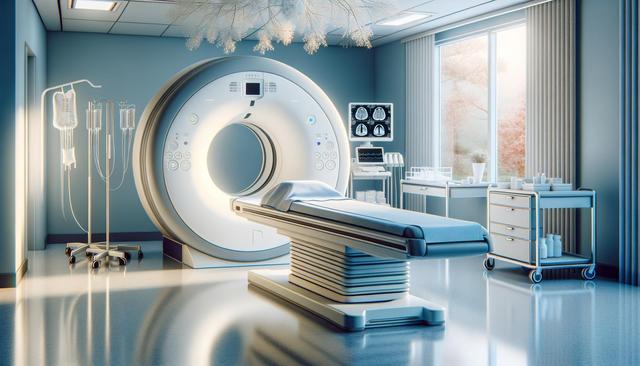What Are the First Steps in Stroke Treatment?
When a stroke occurs, time is critical. One of the most important aspects of managing a stroke is understanding what are the first steps in stroke treatment. These initial actions can make a substantial difference in a person’s survival and recovery. The first step is always to call emergency services immediately. Once the patient arrives at a hospital, a rapid assessment is performed, often including a CT scan or MRI to determine the type of stroke. This helps caregivers make informed decisions about treatment options.
Depending on the type of stroke, immediate treatment may involve:
- Administering clot-dissolving medications (for ischemic strokes)
- Controlling bleeding and reducing pressure in the brain (for hemorrhagic strokes)
- Stabilizing vital signs such as blood pressure and oxygen levels
- Monitoring for complications like brain swelling or additional bleeding
These early interventions are all part of a time-sensitive protocol aimed at minimizing brain damage and preserving neurological function.
How Stroke Treatment Differs Based on Type
Understanding how stroke treatment differs based on type is crucial to providing appropriate care. There are two main types of strokes: ischemic and hemorrhagic. Ischemic strokes, which are caused by a blockage in a blood vessel supplying the brain, are the most common. Hemorrhagic strokes, on the other hand, result from a ruptured blood vessel leading to bleeding in or around the brain.
Treatment for ischemic strokes typically includes:
- Thrombolytic therapy to dissolve the clot
- Mechanical thrombectomy to remove the blockage in large vessel occlusions
- Antiplatelet medications to prevent further clotting
In contrast, hemorrhagic strokes require a different approach:
- Medications to lower blood pressure and reduce bleeding
- Surgical interventions to repair the ruptured vessel
- Draining excess fluid to relieve pressure on the brain
The type and location of the stroke influence not only the immediate treatment but also the long-term rehabilitation strategies and potential outcomes.
The Importance of Immediate Care After a Stroke
The importance of immediate care after a stroke cannot be overstated. The faster a stroke is treated, the more likely it is to limit damage and improve recovery prospects. Within the first few hours, especially during what is known as the “golden window,” medical intervention can significantly reduce the risk of long-term disability.
Immediate care focuses on:
- Stabilizing the patient’s condition
- Preventing further brain injury
- Starting early rehabilitation efforts
Hospitals often follow established stroke protocols designed to streamline diagnosis and treatment. These protocols may include rapid imaging, early administration of medication, and coordination with specialists. Patients treated within stroke treatment centers with recovery programs tend to have better outcomes due to the comprehensive and timely approach these centers offer.
Beyond medical treatment, early response also helps in preparing the patient and their family for the upcoming stages of care, both physically and emotionally.
Stroke Treatment Centers with Recovery Programs
Stroke treatment centers with recovery programs are uniquely equipped to handle the complex needs of stroke patients. These centers not only provide immediate medical intervention but also offer structured pathways for rehabilitation and long-term recovery. Multidisciplinary teams typically include neurologists, physical therapists, occupational therapists, speech-language pathologists, and social workers.
Key features of these centers include:
- Advanced diagnostic technology
- 24/7 emergency stroke response teams
- Access to clinical trials and advanced therapies
- Coordinated rehabilitation services with guided therapy
These programs are designed to start rehabilitation as early as possible, often while the patient is still in the hospital. Guided therapy sessions help address specific deficits caused by the stroke, such as mobility issues, speech difficulties, or cognitive impairments. The goal is to maximize recovery potential and prepare the individual for a return to daily life.
Long Term Care Options for Stroke Survivors
Recovery from a stroke does not end when the patient is discharged from the hospital. Long term care options for stroke survivors are an essential part of the rehabilitation journey. Depending on the severity of the stroke and the level of remaining disability, care can range from outpatient therapy to full-time residential care.
Common long-term care options include:
- Home-based therapy with visiting professionals
- Outpatient rehabilitation programs
- Assisted living facilities with medical oversight
- Skilled nursing homes specializing in neurological recovery
Family involvement and support are critical components of long-term recovery. Education and training for caregivers can ensure they are prepared to assist with mobility, medication management, and emotional support. Additionally, stroke survivors may benefit from ongoing counseling, support groups, and community-based programs that help maintain motivation and social engagement as they adjust to new routines.
Conclusion: A Comprehensive Approach to Stroke Recovery
For individuals and families affected by stroke, understanding the full spectrum of care—from the first response to long-term rehabilitation—is key to navigating recovery. Recognizing what are the first steps in stroke treatment, how stroke treatment differs based on type, and the importance of immediate care after a stroke can dramatically impact outcomes. Choosing stroke treatment centers with recovery programs and engaging in rehabilitation services with guided therapy ensures a structured and effective recovery path. Lastly, exploring long term care options for stroke survivors helps maintain progress and quality of life. With the right support and resources, stroke survivors can work toward regaining independence and building a fulfilling future.




Leave a Reply